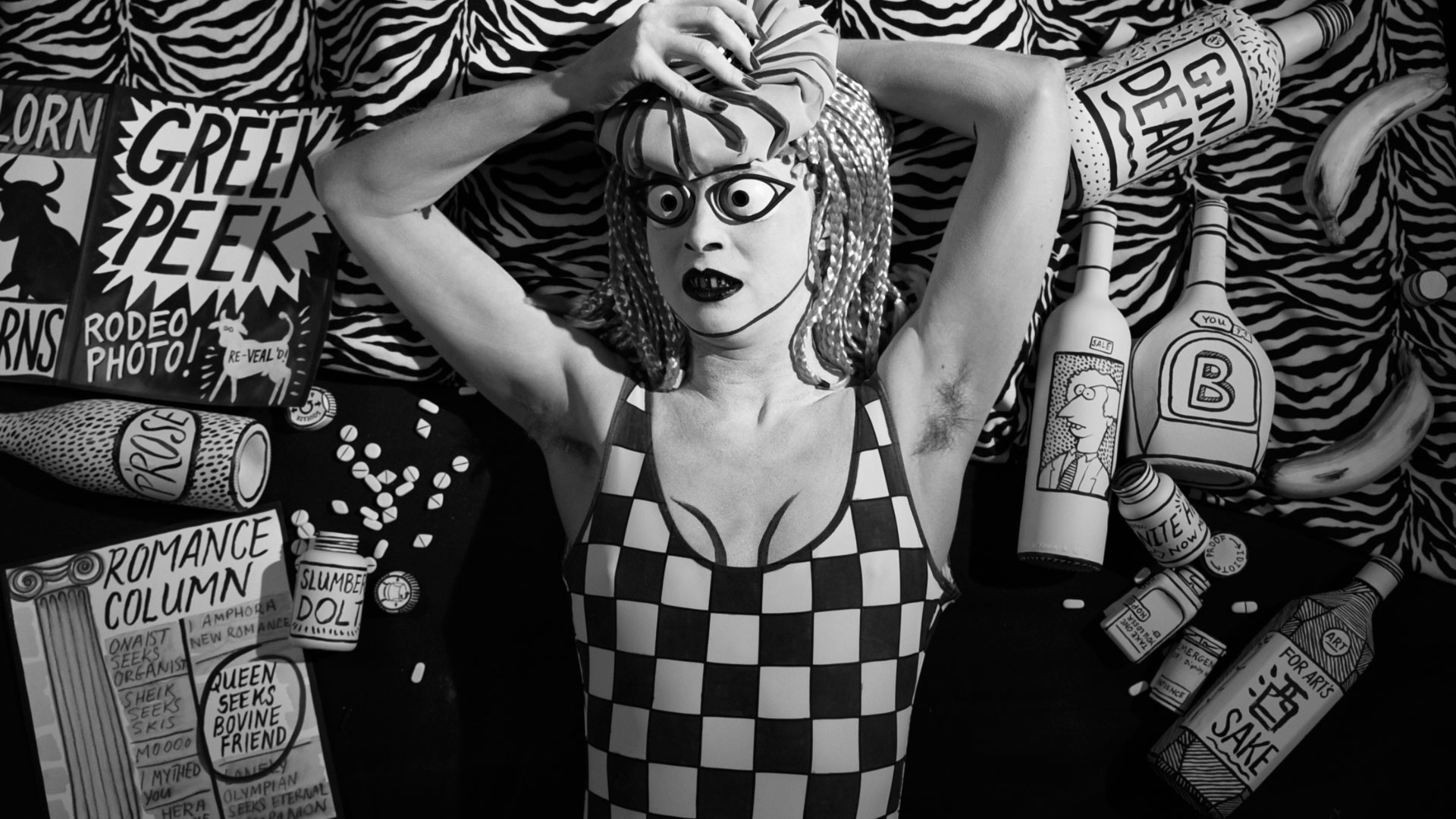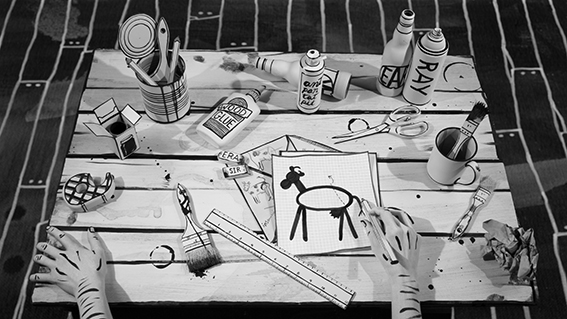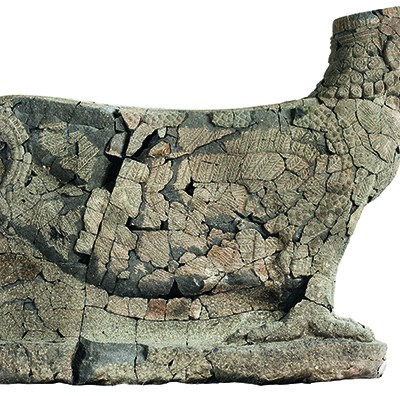In its simplest sense Swinburne’s Pasiphae is just a one-woman film production of a 19th-century melodramatic fragment, accompanied by a selection of props and small paintings. It wouldn’t be ungenerous to Swinburne to say that text itself is hard to take seriously on the page: a soggy morass of overwrought, alliterative verse that exemplifies the worst excesses of Victorian sensational style. Mary Reid Kelley’s own style, however, manages to transform the melodrama, despite reading it straight.
Swinburne’s Pasiphae (2014, HD video still), Mary Reid Kelley with Patrick Kelley © the artist. Courtesy Pilar Corrias, London

Hers is a black and white world that reads as a live-action take on the visual style of Max Fleischer’s early Betty Boop and Koko the Clown cartoons. It’s a place where every object is painted white and outlined in thick black marker, including Reid Kelley herself, whose Pasiphae sports a grease-paint cleavage over her chequerboard swimming costume, and a pair of halved and dotted ping-pong balls for eyes; her Minotaur has its bull’s face poking through a ragged hole in the traditional cartoon shorthand for monstrosity, a brown paper bag.
Beneath the black and white surface, Reid Kelley’s Swinburne’s Pasiphae is all about reference and ownership – as the multiplying possessives suggest. She astutely points out in her notes to the show that mythological characters like Pasiphae are both points of reference in themselves – ‘authorless free agents’ moving through our cultural history, ready to be pressed into service whenever artists might choose – and a means of referencing such artists – entering into a ‘collaborative experience’ with their visions of the same myths.
Swinburne after Rossetti (2014), Mary Reid Kelley with Patrick Kelley © the artist. Courtesy Pilar Corrias, London

Of course, though, making the endless layers of reference that attach to Greek myth and its use by artists over nigh-on three millennia the focus of one’s own artistic project is a strategy that inevitably runs the risks of, on one hand, hermeticism, and on the other, of self-diminution by contrast with the things referenced. Happily Reid Kelley’s work navigates the strait between those dangers with rare and quite brilliant verve.
Alongside the daunting forebears that suggest themselves here (Picasso being the most obvious), and the ones that Reid Kelley names herself, it is James Joyce who seems to sum up the central victory of Reid Kelley’s astonishing, pun-laden take on the Minotaur myth. It is not just that the soi-disant Irish Daedalus is an obvious point of reference for the subject of the show, it is that Reid Kelley so neatly encapsulates what he would call the ‘jocoserious’ – that joyful category of expression where the levity of a piece is precisely what manages to give it gravitas.
Swinburne’s Pasiphae (2014, HD video still), Mary Reid Kelley with Patrick Kelley © the artist. Courtesy Pilar Corrias, London

Acted out here, Swinburne’s fragment becomes the source of fun without ever being an object of it. At one point the spoken phrase ‘her desire’ appears in letters on the screen, only to be sequentially rearranged into anagrams and near-anagrams of itself by Daedalus animated tools: ‘herd desire’, ‘herd sire’. It’s a transformation that sums up Reid Kelley’s approach to myth. She respects its weirdness and distance from us; its familiarity and persistence in culture; its ability to change and be changed endlessly while remaining itself.
‘Mary Reid Kelley: Swinburne’s Pasiphae’ is at Pillar Corrias, London, until 4 October.



